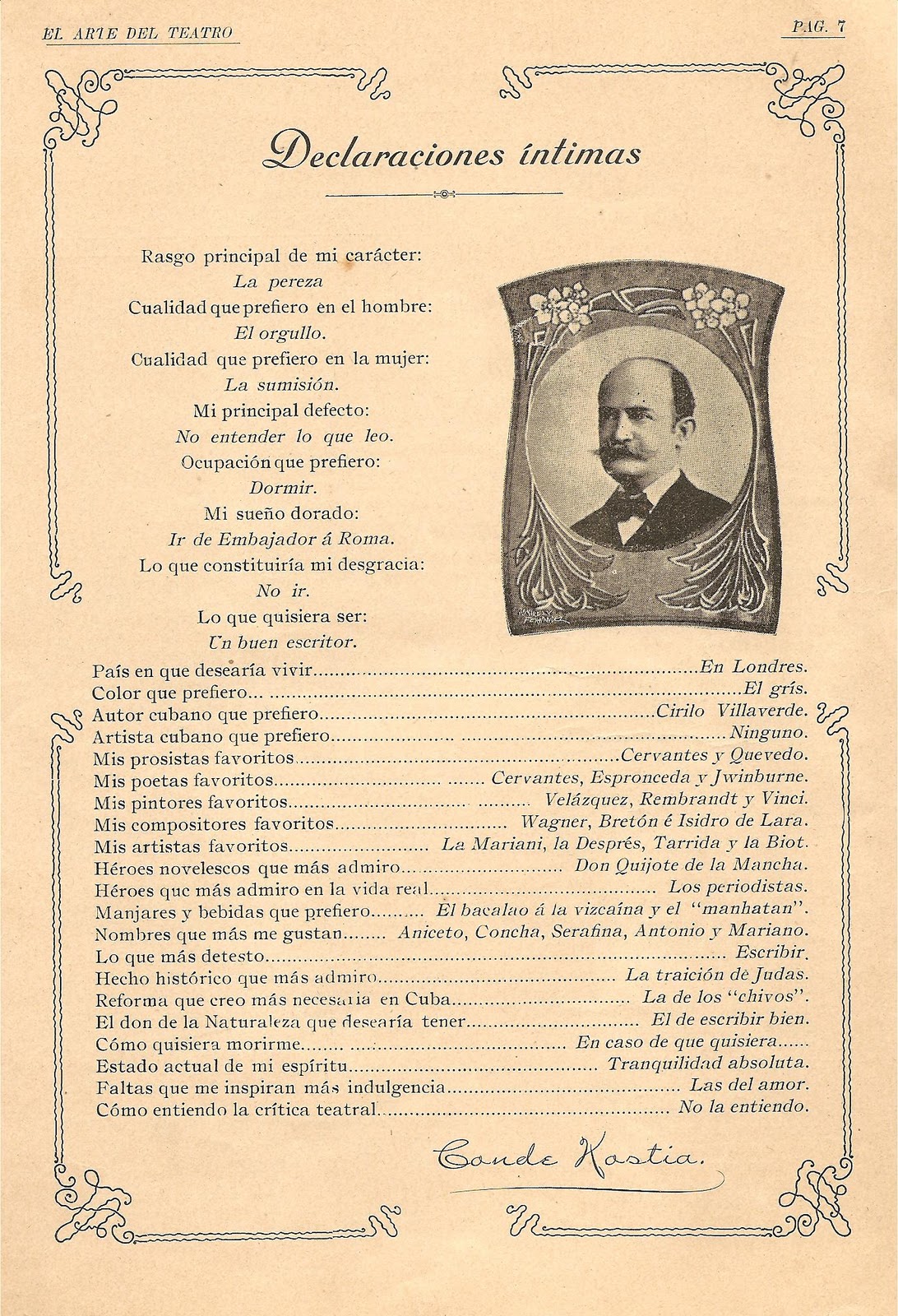3.7.9 The literary criticism texts of Aniceto Valdivia (1857 – 1927)

Aniceto Valdivia, also known by the pseudonym Conde Kostia, traveled to Spain at the age of 14 and earned a law degree from the University of Santiago de Compostela in Madrid. He achieved a degree of recognition within Madrid’s cultural circles, publishing texts in El Globo, El Pabellón Nacional, Madrid Cómico, and El Imparcial, and releasing his verse drama “Senda de abrojo.”
His political affiliation was pro-independence; however, this did not have much impact on his literary opinions; these generally appear scattered or through reference to a mixed bag of works and authors, making it difficult to lucidly assess his writings, which include theatrical chronicles and opinions on other artistic forms, such as painting, sculpture, and music.
Although Aniceto Valdivia apparently possessed a considerable amount of knowledge, some of his erroneous or overly categorical judgments reveal a certain thoughtlessness or perhaps haste in his writing, which occasionally irritated even readers who professed admiration for him.
Some of Valdivia’s critical assertions can be traced to a series of works he wrote for the prologues, including “Niñada” by Luis Vega Poey; “Mi libro de Cuba” by Dolores Rodríguez de Tío; “Gemelas” by the Uhrbach brothers; “Rimas” by Juana Borrero; and “Entre Brumas” by Andrés Clemente. He did, however, offer some interesting opinions on Cuban poetry at the turn-of-the-century.
Unlike other critics, he acknowledged the contributions of modernism and French lyric poetry, but at the same time spoke out against the excessive mimesis that prevailed among the island’s poets, to the detriment of the creative incorporation of this movement’s discoveries. He recognized Julián del Casal—of whom he was a close friend—as an exponent of this movement in America.
He struck up a fruitful friendship with Rubén Darío, fostered by the Nicaraguan poet’s trips to Cuba. In addition to writing several plays, he published diverse texts in “El Palenque literario,” “La Lucha,” “La Habana elegante,” “El Fígaro,” “El Triunfo,” “Revista Cubana,” and “El Hogar.”
He settled in Mexico in 1895 and returned to Cuba after the establishment of the Republic in 1902. Upon his return, he continued his distinguished cultural work and also served on diplomatic missions in Norway and Brazil. Despite the lack of scientific and literary foundation in some of his judgments and the interweaving of unsubstantiated data, his writings contain some insights that deserve to be revalued by contemporary critics.








